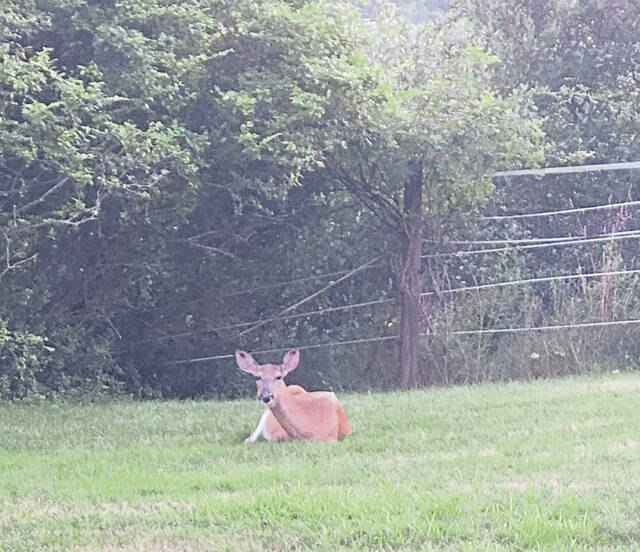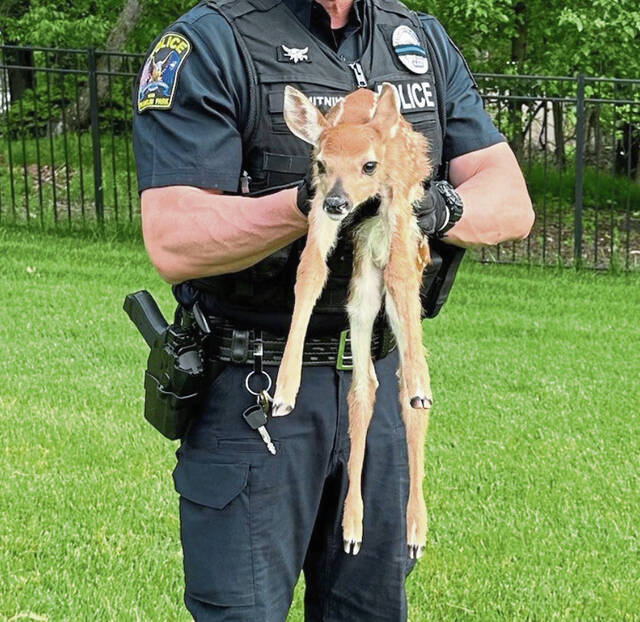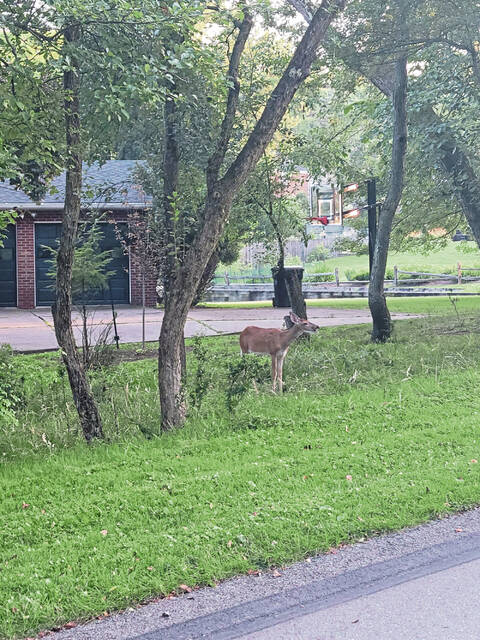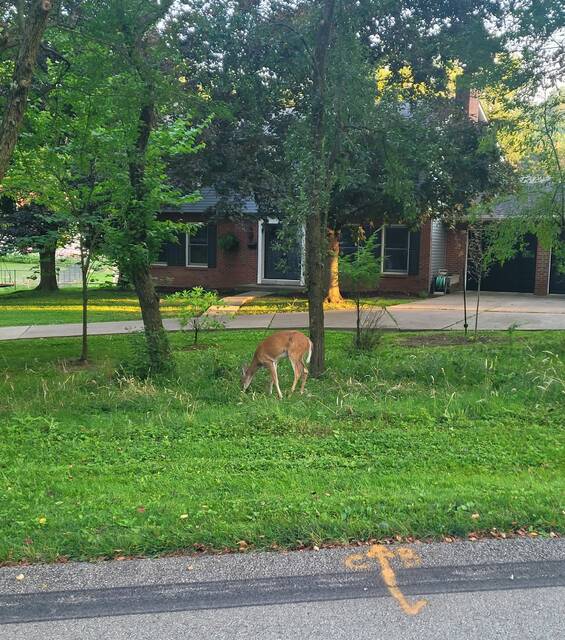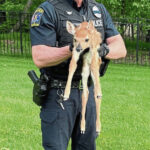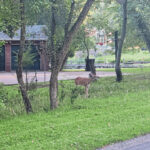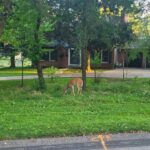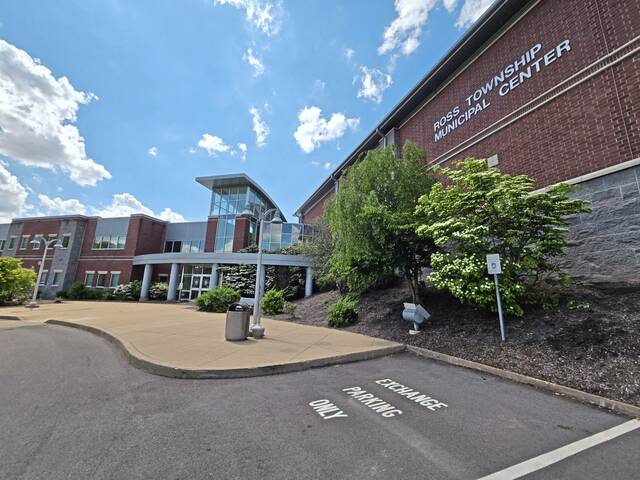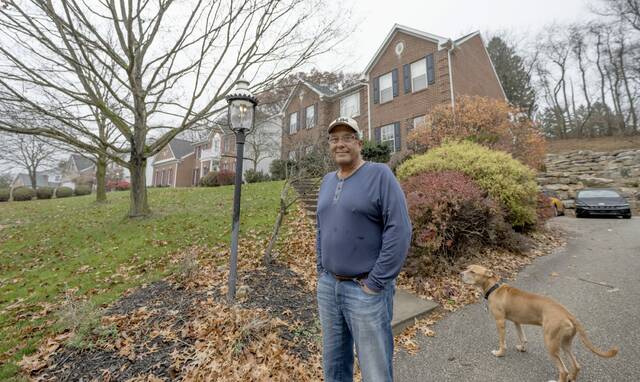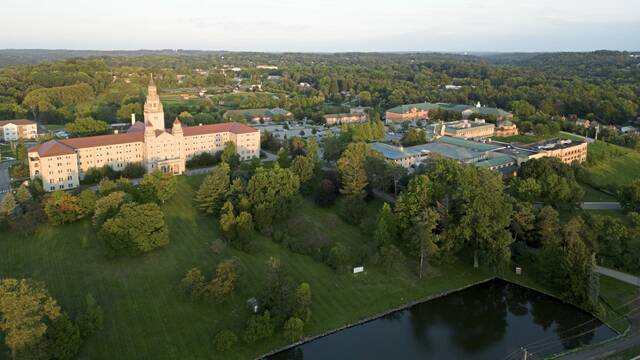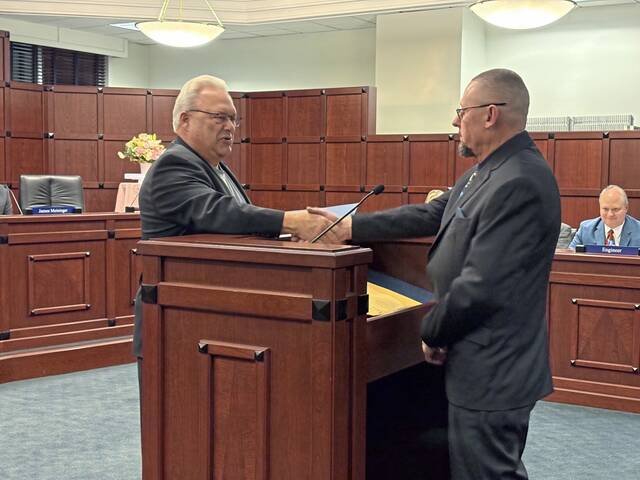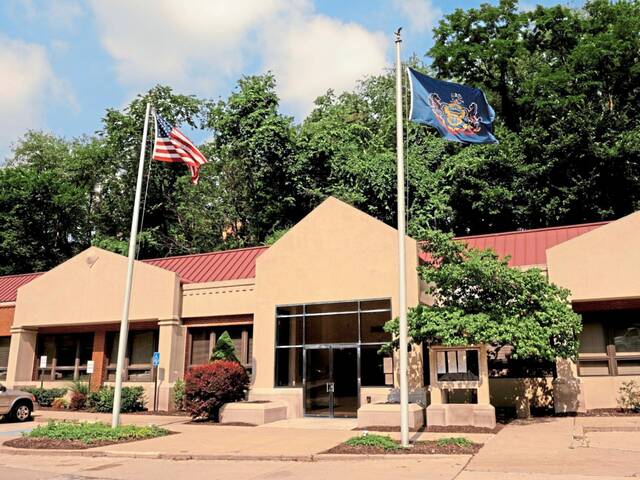Deer continue to be problematic in the North Hills region.
It’s such a problem that the McCandless Environmental Advisory Committee read a public statement at the town’s June 9 council meeting about the need for stronger deer management.
The growing McCandless deer overpopulation has existed for many years and has devastated the natural ecosystem, Jeff Petro, EAC chair, told council at the June 9 meeting.
“As the EAC continues in its mission to foster rain gardens, enhance parks through trail building and our current ambitious project of tree restoration and preservation, the reduction and maintenance of the deer overpopulation is the essential foundation to which success will be achievable,” Petro said.
He said as deer browse on the small trees, shrubs and native plants and gardens, native trees die. What remains are invasive species such as Japanese barberry, Japanese stiltgrass and tree of heaven.
“In short, the forest is unable to regenerate, which has long-range effects for our township’s natural resources (parks) and its inhabitants,” Petro said.
Since 2021, the EAC has worked with the municipality and Suburban Whitetail Management to secure municipal and residential properties as available tracts of land to reduce and harvest the deer overpopulation. Because this is recognized as an approved project, the EAC tracks the results on a monthly basis, he said.
To meet its environmental objectives, the EAC is unanimously in favor of taking a stronger and more active approach in reducing the deer population.
In Marshall, several residents at the July 6 meeting also voiced their concern about the deer.
“I am, myself, totally overloaded with deer,” said Francois Bitz, a resident on Woodland Road.
He said his crops have been destroyed for two years in a row.
A nearby Marshall resident, Richard Lachimia, who owns a large portion of land, said “it’s a true problem” regarding deer.
He allows his in-laws to hunt on the property but said he is not comfortable with letting in other people to hunt there and wouldn’t permit it.
There’s not much they can do, said Julie Bastianini, who was Marshall’s township manager at the time of the meeting. Bastianini has since taken on the manager role for Fox Chapel, and Marshall is advertising for a new manager.
“If private property owners are not giving permission to hunt on their property, we are very limited in what we can do,” she said.
Bastanini said they can speak to the Game Commission on options.
Marshall, along with Bradford Woods, Franklin Park and McCandless, have ordinances that prohibit feeding deer.
Part of Marshall’s ordinance, for example, states: “No person shall knowingly, purposely or intentionally feed deer, cause deer to be fed or provide food to deer in Marshall Township on any public or private property.”
Several communities utilize or have utilized Suburban Whitetail Management.
Bradford Woods has been using SWM since 2022.
“They hunt on borough-owned properties as well as private properties of 5 acres or more. Adjacent property owners can combine their land to reach the 5-acre minimum. We see more and more private property owners enrolling their land in the program every year,” said Rusti Null, manager of Bradford Woods.
In addition to a no-feed ordinance, Franklin Park allows in-house hunting.
“Additionally, we were a member of the Suburban Whitetail Management group but moved that process in-house around two years ago. The borough now issues permits to archery hunters directly to manage the deer population on borough property. We have maintained the same number of permits issued between SWM and in-house services,” said Zachary Filous, borough manager for Franklin Park.
Franklin Park averages about 15 permits each year, he said.
SWM runs controlled archery hunts during archery season in McCandless, said John Bojarski, spokesperson for McCandless.
The program entails property owners signing up for their land to be used for archery hunting and credentialed hunters signing up to hunt. Additionally, town-owned properties were opened to SWM hunters last year, Bojarski said.
“SWM hunters have netted nearly 200 deer since the beginning of the program. However, there still are a number of cars-into-deer crashes (more than 160 that we know of the previous season, which is about fall to winter) and low-lying plants that deer typically eat are not regenerating quickly. Because of this, we are looking to take a more proactive approach this fall to lower the deer population to a more sustainable level,” Bojarski said.
Deer concerns have been brought up in recent months and will continue to be brought up by both residents and staff, and McCandless staff and council will address the more proactive approach later this year, he said.
He said they have an event planned for 7 p.m. Sept. 30 at Town Hall on Grubbs Road with Jeannine Fleegle, a wildlife biologist with the state Game Commission, as the speaker. Fleegle will discuss what actions residents can take to deal with white-tail deer in their communities.
Suburban Whitetail Management also works in Ross to help curve deer population in areas, according to owner and operator Luke Leonard.
“In most cases, it’s the residents of these municipalities who give SWM the best information on problem deer areas. We then work with those landowners to place hunters in that immediate area,” Leonard said.
Ross commissioners approved a deer cull managed by SWM to start next year, he said.
Deer like large tracts of land if the habitat can support them, but it’s usually smaller areas behind homes that give white-tail deer everything they need to flourish.
“It’s really a misconception that ‘We keep building homes and the deer have nowhere to go,” which I hear a lot of the time over and over. In fact, deer do extremely well in suburban areas,” Leonard said.
Suburban areas give cover, allowing low-hunting pressure, and sometimes zero-hunting pressure, away from natural predators, and homeowners plant a wide variety of plants and shrubs that deer love to eat all year long, Leonard said.
“Unfortunately, we still see a lot of residents feeding them, which is very bad for the deer’s dietary balance needs. Don’t forget about the hundreds of vehicle accidents that occur each year in this municipalities due to deer,” Leonard said.
Many communities have imposed ordinances prohibiting the feeding of deer, including adding salt licks to their property. For instance, Ross residents caught feeding deer face fines of $25 for the first offense, $75 for the second, $150 for the third and $300 for the fourth and all subsequent offenses.
Each municipality comes with its own challenges, but SWM’s biggest obstacle is opening up these areas that are privately owned for archery hunting.
He said SWM can evaluate a resident’s property along with the surrounding areas.
“We have many areas where homeowners band together to make a safe and legal archery hunting area for hunters,” he said.
Homeowners interested in contacting SWM can do so through the company’s website at suburbanwhitetailmanagementpa.com or by emailing suburbanwhitetailpa@gmail.com.


